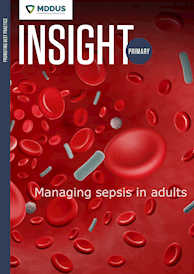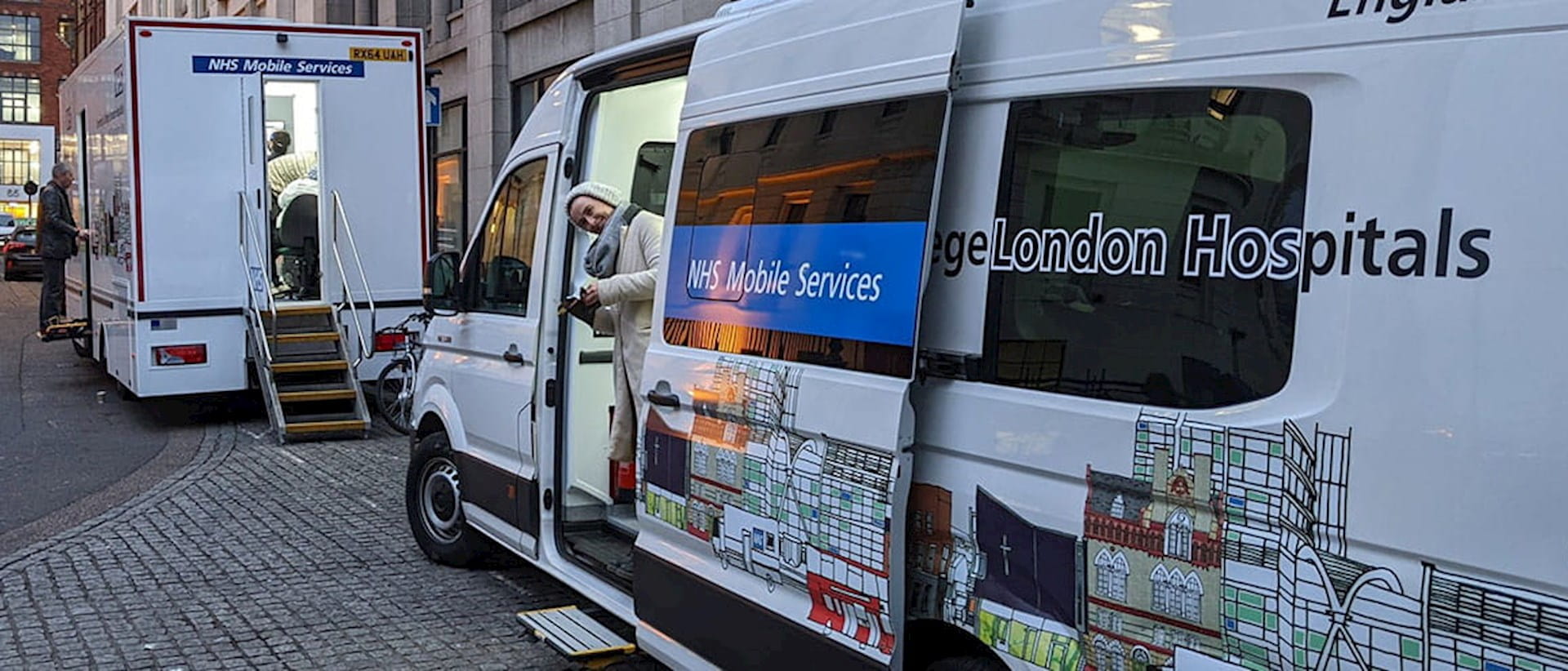LONDON has been called the tuberculosis capital of Europe. In 2011 there were 8,280 notified cases of tuberculosis in England – and 40 per cent of those cases were in greater London.
The situation is much improved today, with latest annual case numbers in England half those of 2011 (4,125) and around 35 per cent in the capital. Part of the success in reducing case numbers can be attributed to an innovative service launched in 2005 by University College London Hospitals (UCLH) NHS Foundation Trust.
Find & Treat is a mobile screening service operating bespoke vans on the streets of London, visiting hostels, soup kitchens, drug services, custodial establishments and immigration services, actively seeking out patients. A prime aim of the service is to take tuberculosis disease control into the community – to find active cases early and support patients to undertake a full course of treatment and get cured.
Find & Treat employs a multidisciplinary team, including TB nurse specialists, social and outreach workers, radiographers, expert technicians and some former TB patients who work as peer advocates.
Aamena Bharmal, a GP specialist trainee who has worked with the service, describes it as “a healthcare Tardis – a regular white van from the outside, but inside a one-stop roaming health care clinic”.
In addition to tuberculosis, Find & Treat tackles a wide range of infectious and chronic diseases, screening, diagnosing and treating conditions including Hepatitis B and C, HIV, cardiovascular issues, STIs, flu and Covid-19. It reaches around 10,000 patients yearly, including the homeless, vulnerable migrants, people with drug or alcohol dependencies, sex workers and prison residents.
Services such as chest X-ray screening, blood tests, advice and practical assistance and treatment, including vaccination and a needle exchange, are all provided onboard the Find & Treat mobile vans. One key factor in success is adequate wireless connectivity.
Data on the spot and in the cloud
Brendan Scott, operations manager with the Find & Treat Directorate at UCLH, explains: “Clearly a huge benefit of wireless technology is that it is an enabler. It allows the service to conduct a multitude of services using the vehicle fleet as a central hub to connect remote devices to manage patient care.”
Recently NHS Digital worked with Find & Treat as part of its Future Wireless Project Trials to explore how new cutting-edge remote technologies could improve connectivity and enhance the service provided. The vans were fitted with a range of high-tech tools and software to enable on-board real-time remote diagnosis and referrals. Technology includes a portable digital X-ray machine that gives instant results and is less intrusive than older units (people do not have to undress).
“Connectivity speed is crucial to the underpinning of what Find & Treat aims to provide to its service users as the ‘gold standard’ in healthcare,” says Brendan. “For example, it will allow the potential to explore real-time teleradiology where clinical images can be captured in the field and read back at base UCLH location.”
Before the upgrade, patients would have their images taken and read by a reporting radiographer before being stored on a database inside the van. Cellular connectivity or 4G mobile would then be used to transfer the digital X-ray images to a dedicated GDPR compliant cloud-based Picture Archiving and Communication System (PACS). Signal strength often meant the transfer would be slow and unreliable, sometimes resulting in transfers not being completed until the following day. Patients (often with no fixed address or contact details) would then need to be retraced and treated at a later date.
The trial explored the suitability of two wireless connectivity options (5G cellular and geostationary satellite/low Earth orbit satellite connectivity, enhanced with smart antenna systems) used as a hybrid solution, vastly reducing the amount of time needed to upload large data scan files from the X-rays. It would also continue to allow images to be stored on the cloud-based PACS, which enables electronic transfers between healthcare providers.
Says Brendan: “The trial was composed of multiple arms that included not only network coverage, data speeds for uploads and downloads but also how the speed of the technical equipment can improve health interventions by expanding planned clinics and connecting health professionals at the point of care remotely.
“Data transfer rates have improved across the range of hosted services.”
 The Find & Treat team with their bespoke high-tech van
The Find & Treat team with their bespoke high-tech vanFollow-up video consultation
The enhanced connectivity should enable review of scans in “live time” so that patients get their diagnoses quickly and easily while on board the mobile van, therefore speeding up referrals for follow-up treatment and also allowing patients to have video consultations with hospital-based clinicians.
It will also allow faster access to medical records and sharing of medical imagery, with access to a virtual private network (VPN) within hospital trust systems and central services, such as the Summary Care Record and SPINE (a national system which joins together healthcare IT systems across health and social care organisations in England). This would allow clinicians seamless access to patient databases, stored and accessed via the cloud.
Other projects
Other initiatives being undertaken as part of the NHS Digital’s Future Wireless Project Trials are looking at how to bring high-speed connectivity to “digitally isolated” health centres in remote areas using 5G and low Earth orbit satellites. There is also a project investigating the benefits of a faster and more reliable 5G network in hospitals, allowing virtual reality, augmented reality and new electronic observation technologies.
Patrick Clark, NHS Digital’s Director of Infrastructure Services, says: “We’ll be monitoring the impact of the Find & Treat scheme in London and considering how such initiatives might be successfully adopted elsewhere to reach those least able to access healthcare.
“These projects are a step forward in digital transformation and will bring an array of benefits, particularly for those least able to access healthcare and for digitally isolated hospitals and health centres.”
This page was correct at the time of publication. Any guidance is intended as general guidance for members only. If you are a member and need specific advice relating to your own circumstances, please contact one of our advisers.
Read more from this issue of Insight Primary

Save this article
Save this article to a list of favourite articles which members can access in their account.
Save to library
